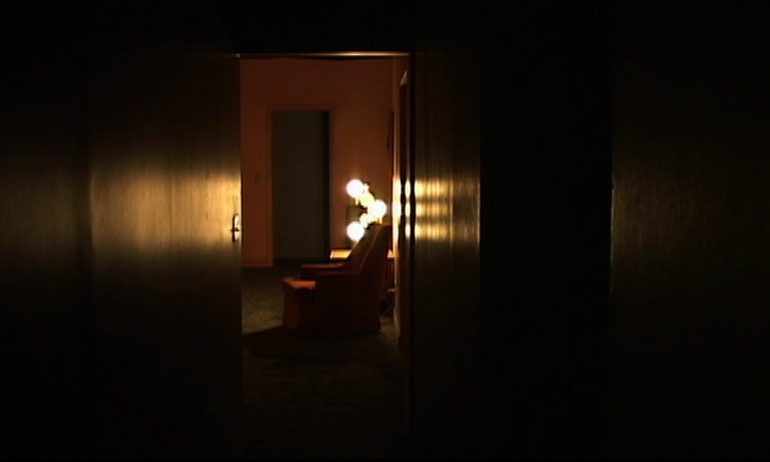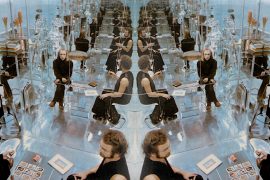Among the various challenges for the Ambient Literature project is how to address the way in which stories work: how stories work when the reader is necessarily present within the piece as it is delivered by means of a pervasive computing device. Experiencing story never is, and has never been, a passive act. We subsume ourselves within stories, and assign importance to character, action, and consequence based on a set of carefully crafted manipulations of our reading. Words on paper matter, as do design, typography (as Ian Gadd reminded us last week), and even the paper on which those words are printed.
Stepping back from material details leads us to genre: the tropes of storytelling, often hidden in the background and unnoticed; the assumptions we make about a story from the incidental details — setting, voice, character, and plot elements; things that can be manipulated by good storytellers in order to surprise and delight.
I don’t think there’s any one genre that Ambient Literature adopts better than others (and to be clear, this is genre as subject matter, rather than form, which is a different, but related concern), but I am interested in addressing genre affordances as a way of thinking about how Ambient Literature might work — as it might be understood as a way to write.
I’ve been reading Mark Fisher’s The Weird and the Eerie this week — partly because Fisher passed away recently, but also as a way to start the process of mapping genres onto ambient writing. Fisher begins by outlining the tensions and difficulties emerging from the extension of Freud’s attempts to explore the unheimlich as a way to understand our relationship with the familiar and the strange (and here I ought to recommend Nicholas Royle’s The Uncanny as a magnificent overview of that subject). Works that employ devices found within weird fiction have already appeared in the canon of work that Amy Spencer has identified as significant to Ambient Literature. Fisher suggests that the quality of the weird as manifesting “that which does not belong” is a sign that we (as readers) are in the presence of the new — “that concepts and frameworks we have previously employed are now obsolete.” He goes on to propose that the eerie entails a disengagement from the urgencies of the everyday — all of which makes useful fodder for Ambient Literature. Experiencing an ambient work asks that the reader construct a new set of responsive manners related to, but at a remove from, conventional storytelling. The voice in their ears (if audio is employed) might be a narrative voice or a substitute for their own thoughts, shifting the position of the reader to one inside the story. That an ambient work makes use of the reader’s location to facilitate aspects of story suggests that Fisher’s proposals concerning the collision of realistic and a traumatising, transcendental “other” site might operate on a different register than they do in a written text. Liminal spaces — the thresholds between one world and another state of consciousness — are employed within the weird as a device to destabilise our relationship with Euclidean geometry, with the way in which we “read” the world. David Lynch’s Inland Empire is composed almost entirely of liminal gateways — each fiction giving way to another, such that the whole becomes a rhizome in a constant state of near-collapse. Ambient Literature can change each reader’s perception of the space around them — altering their relationship to a site; providing, as Matt Hayler put it, stories that “are always there waiting to be found.” The liminal space here is a site that has not changed physically, but that now carries an emotional charge: the afterimage of a story whose trace is unique to each reader.
Alongside genre, I’m becoming convinced that an “Ambient Poetics” requires a fundamental rethink of how we approach writing for this medium — in essence, a reframing of what the rules are built on. Aristotle proposes that all poetry, tragedy, and comedy is imitation, an attempt to portray a life, or a lifelike thing. No wonder then that the incursion of “wrongness” afforded by the weird is so unsettling. If it is the nature of drama to imitate the world, to have the world slip away and present a distinct difference (as Fisher puts it) would undoubtedly rely on an uncanny affect.
However, if Ambient Literature is built from different stock, then it’s possible that “imitation” is not the primary purpose of an ambient work. Imitation, as Aristotle has it, acts at a remove from the reader. We are witnesses to an imitative act when we read. Knowing the genre of detective novels, a reader of a pulp thriller conjures a world that extends beyond any description of the smoke-filled third floor office of a worn down private eye. The grammars of story impart pages of additional detail into the way that detective’s client is described without the writer having to spell out every nuance of that world. (This is how, for example, Se7en works to establish its setting — it borrows tropes from other stories in order to suggest a world beyond the shadows thrown on the cave wall we can see.)
What makes its relationship to genre so complex is that Ambient Literature responds to the presence of a reader. The reader of an ambient work is a participant; their presence as they move through (for example) the work is what triggers story. We might say that the story does not exist until they assemble it. I don’t have an alternative to Aristotle’s imitation, but I suspect that we’ll find one.
— Tom Abba








